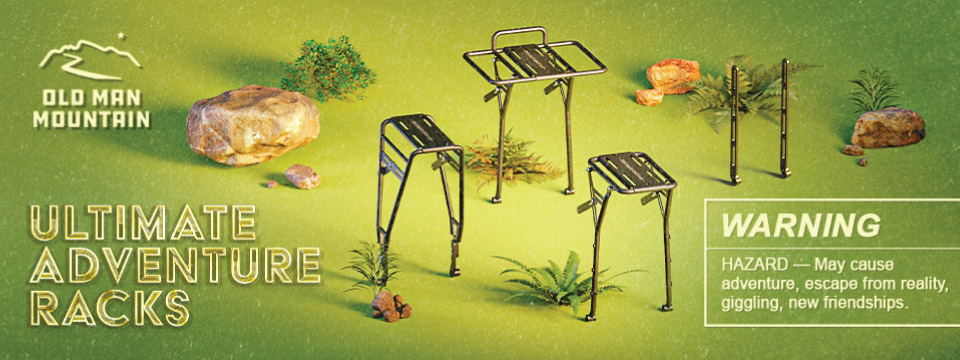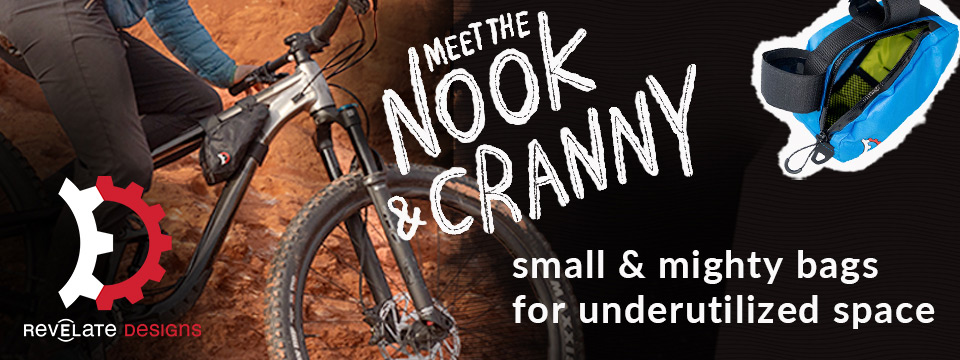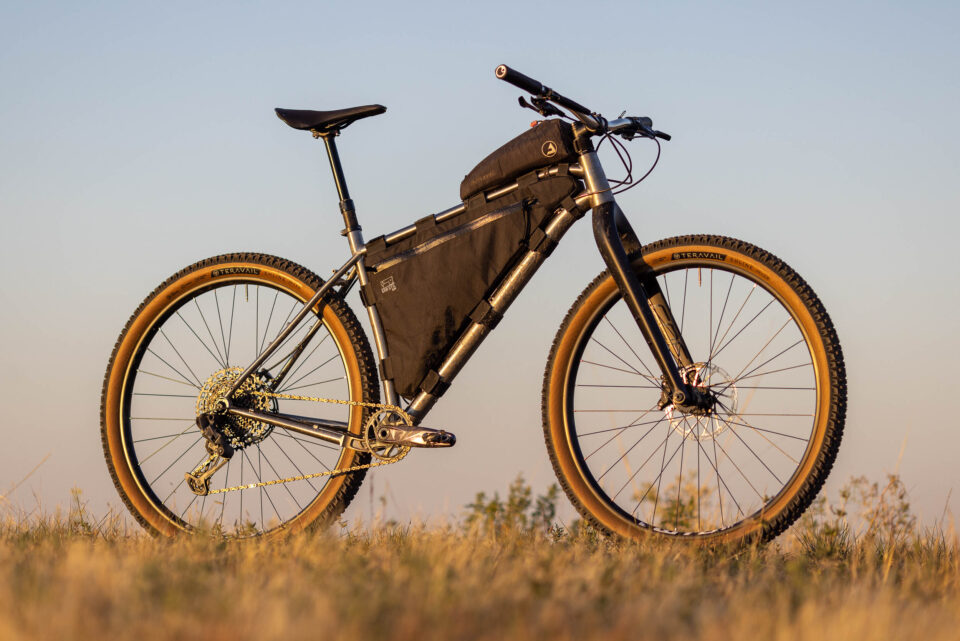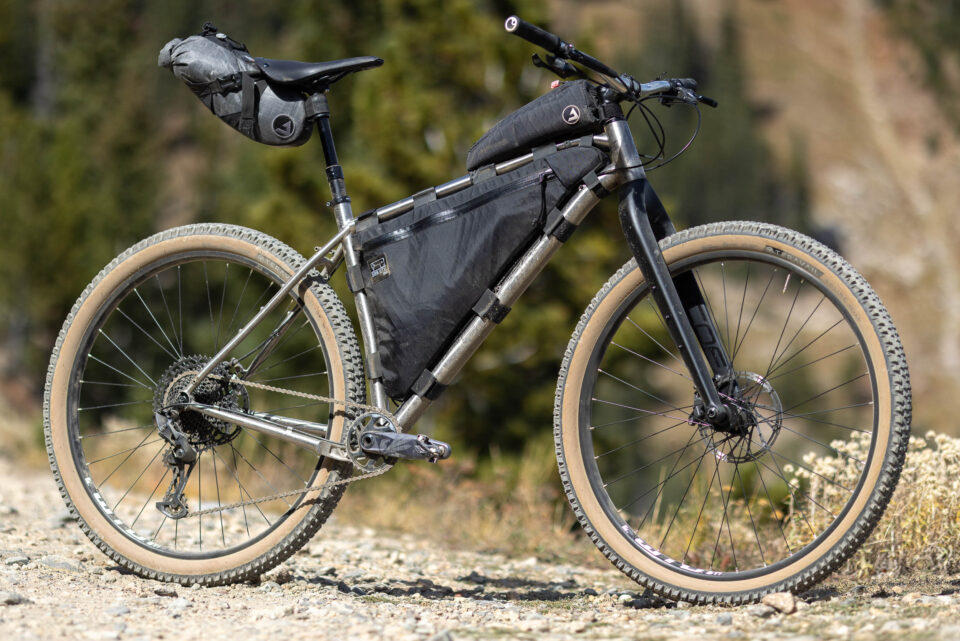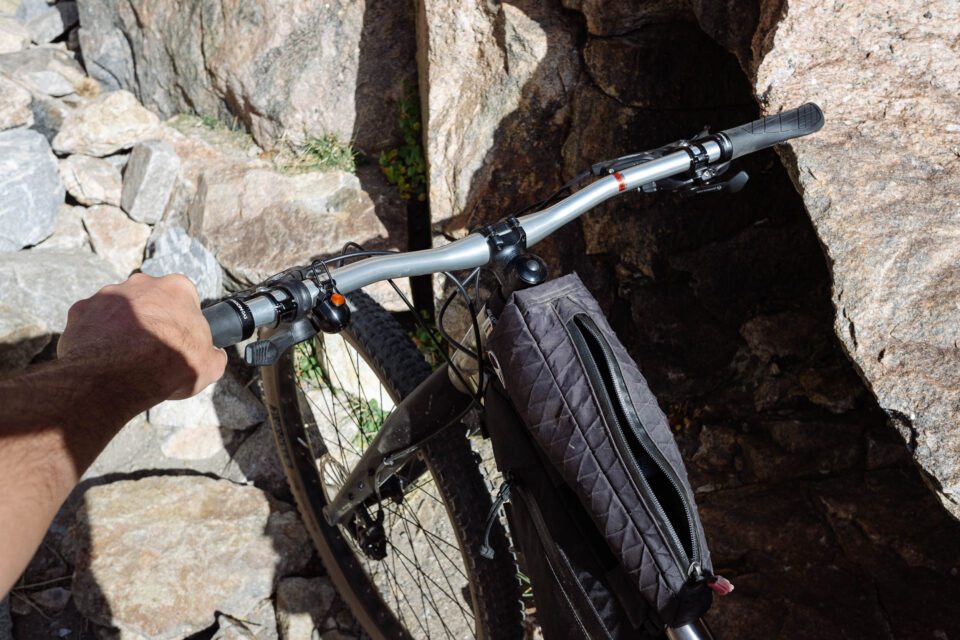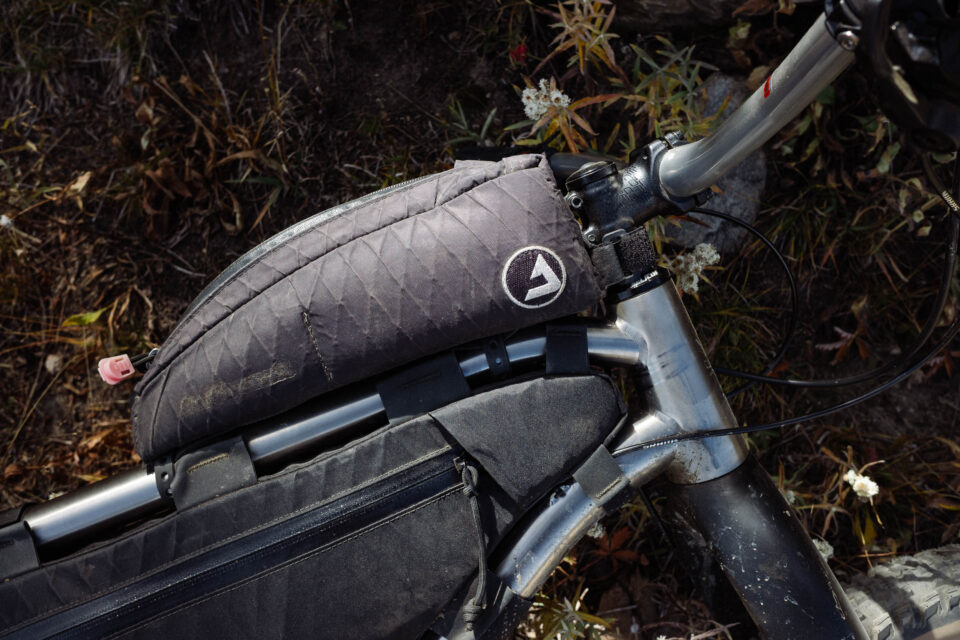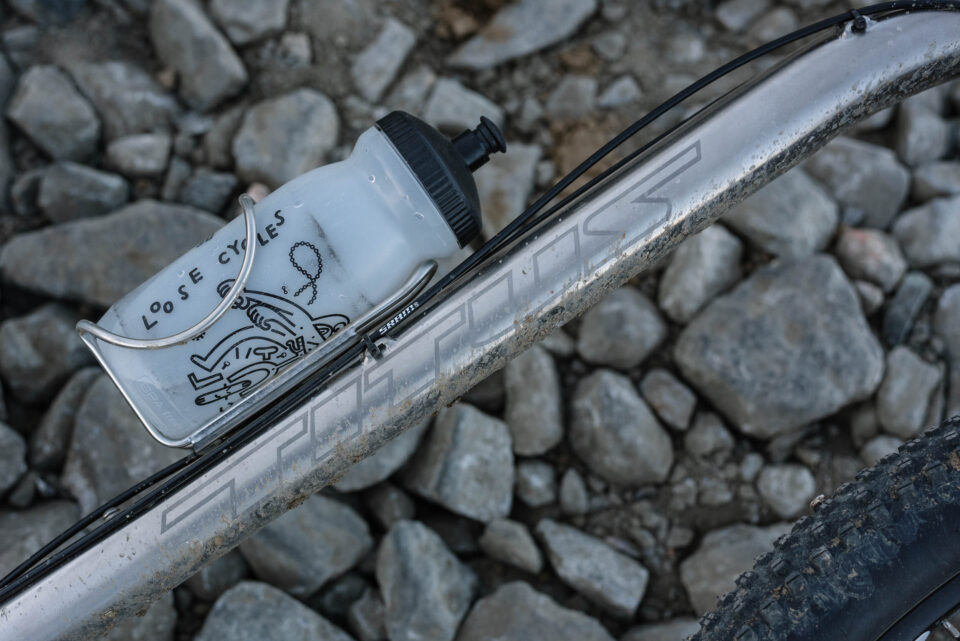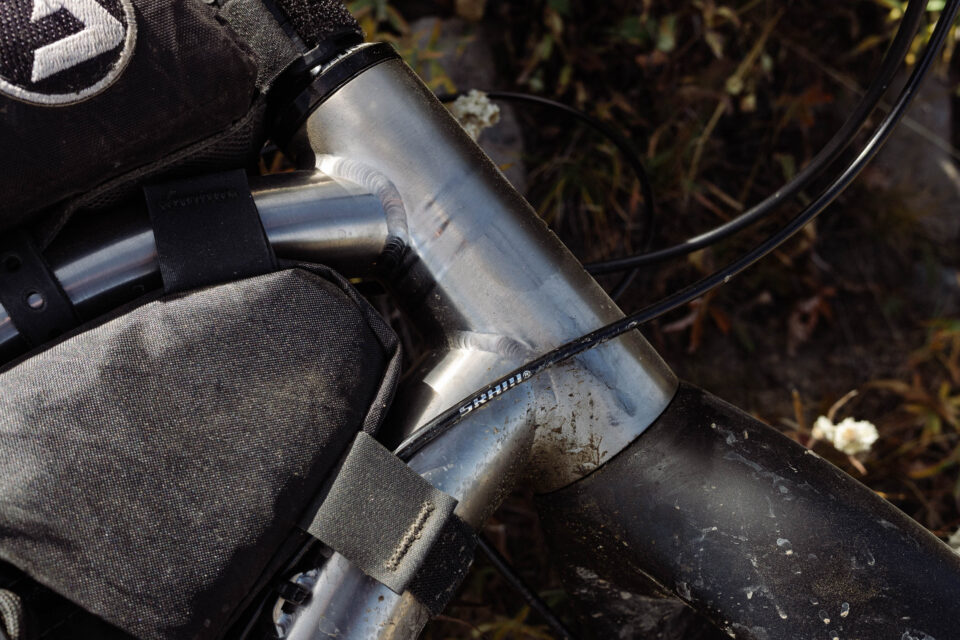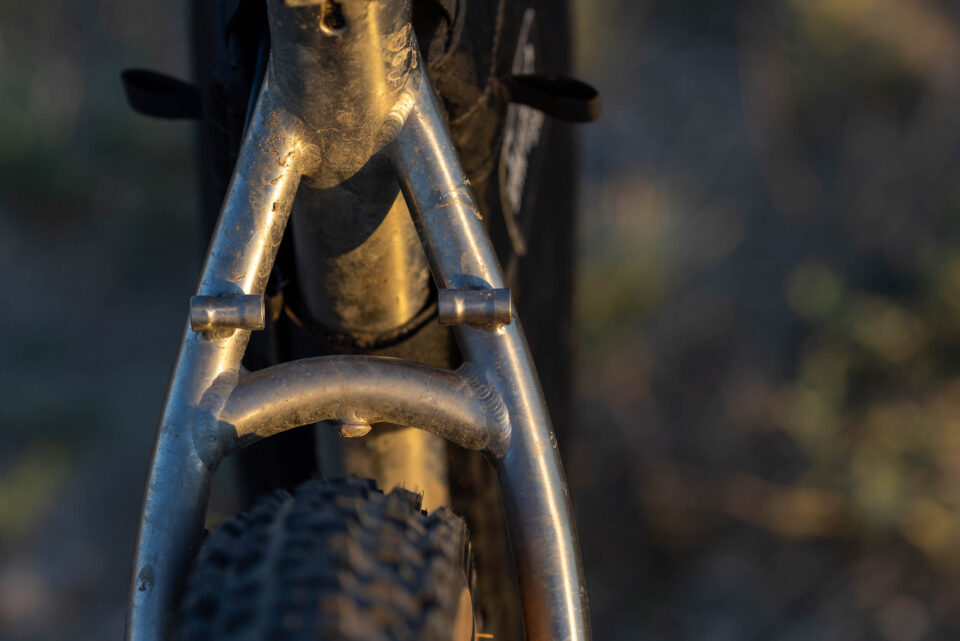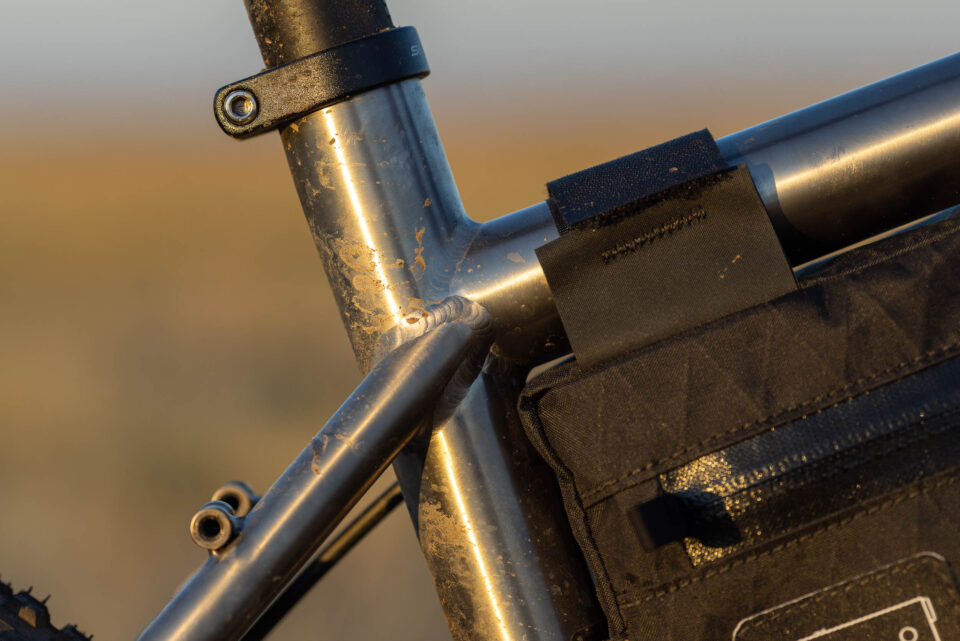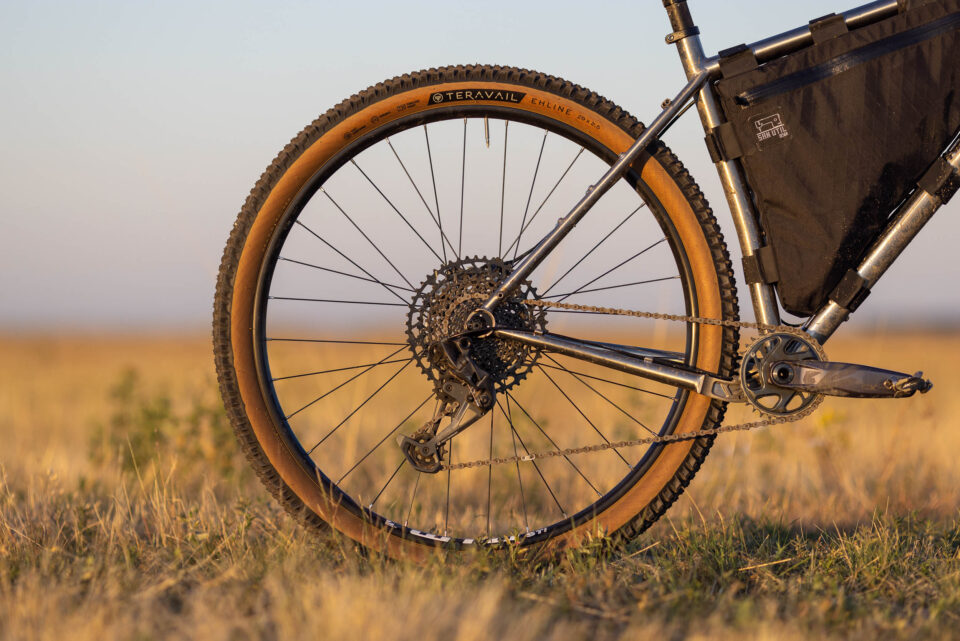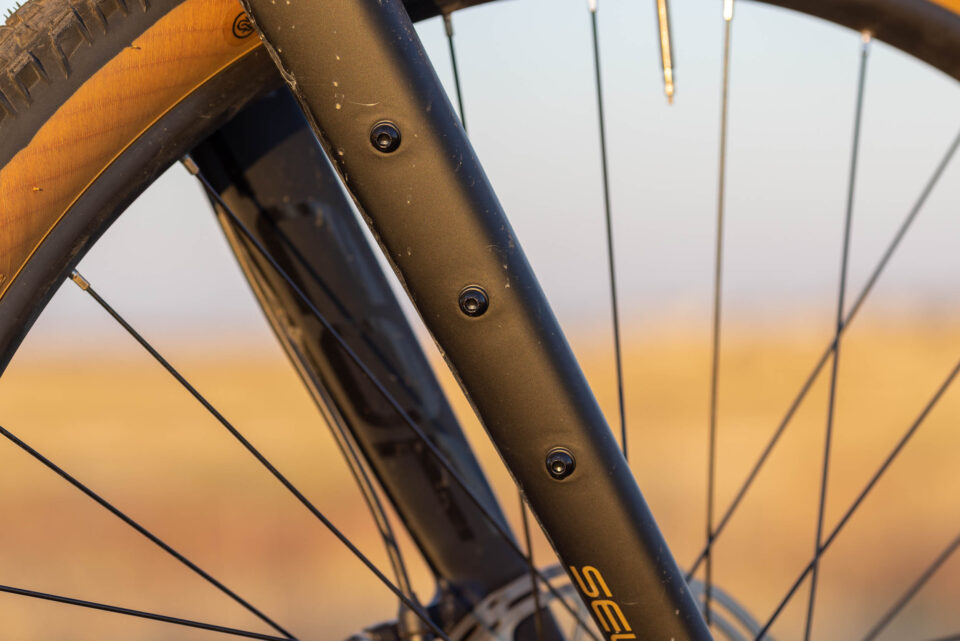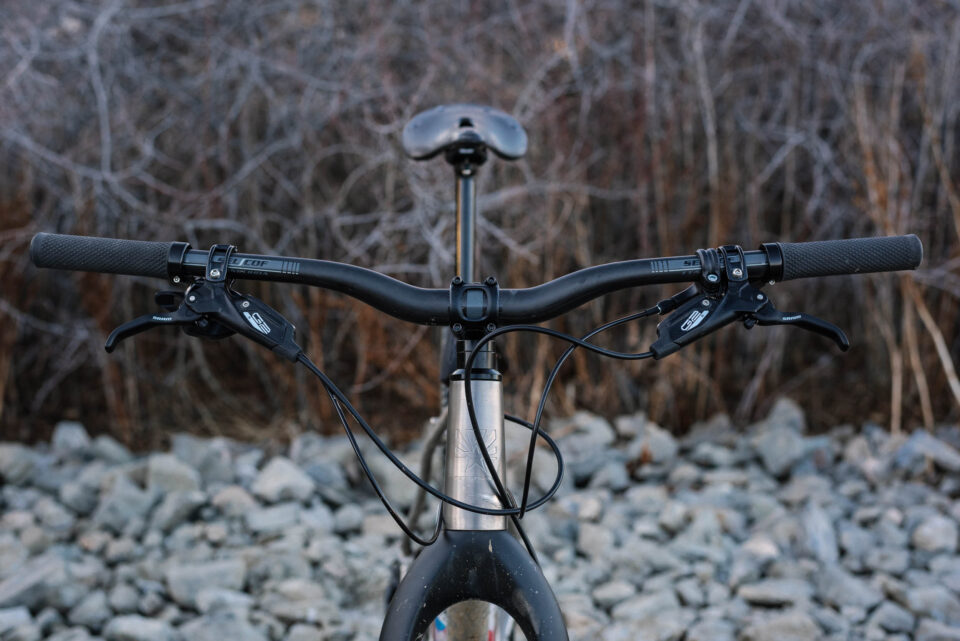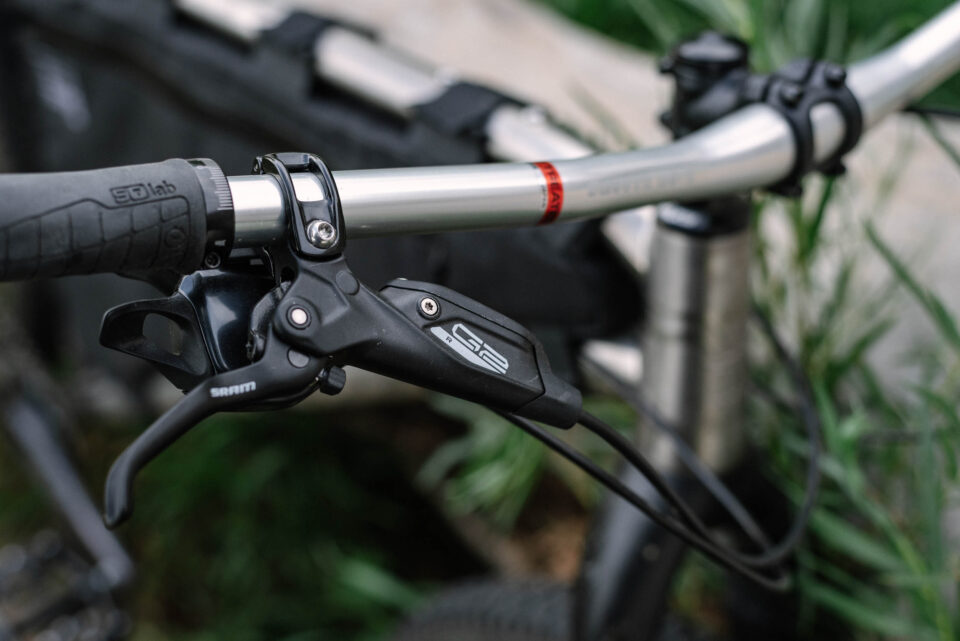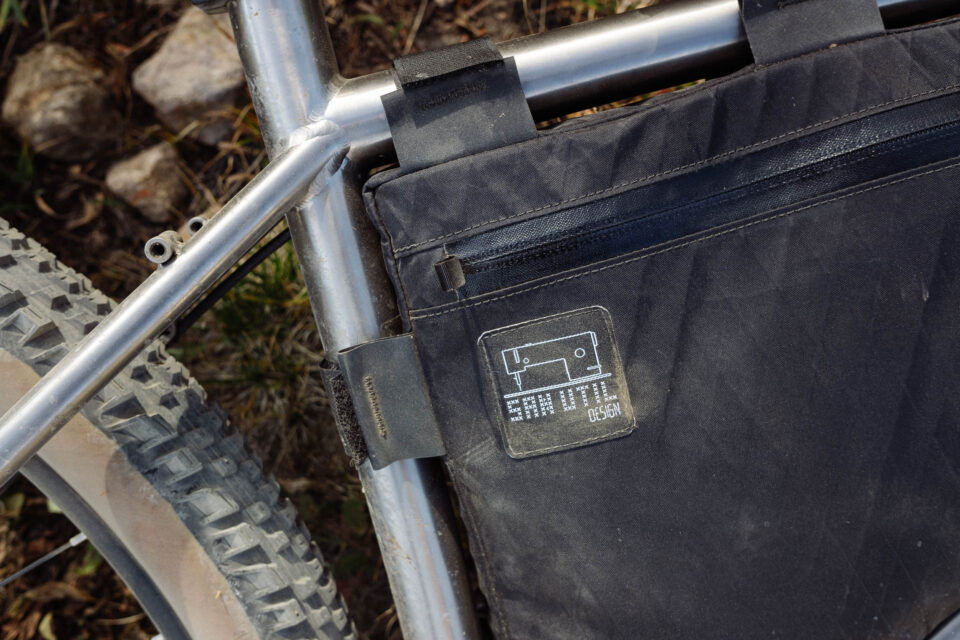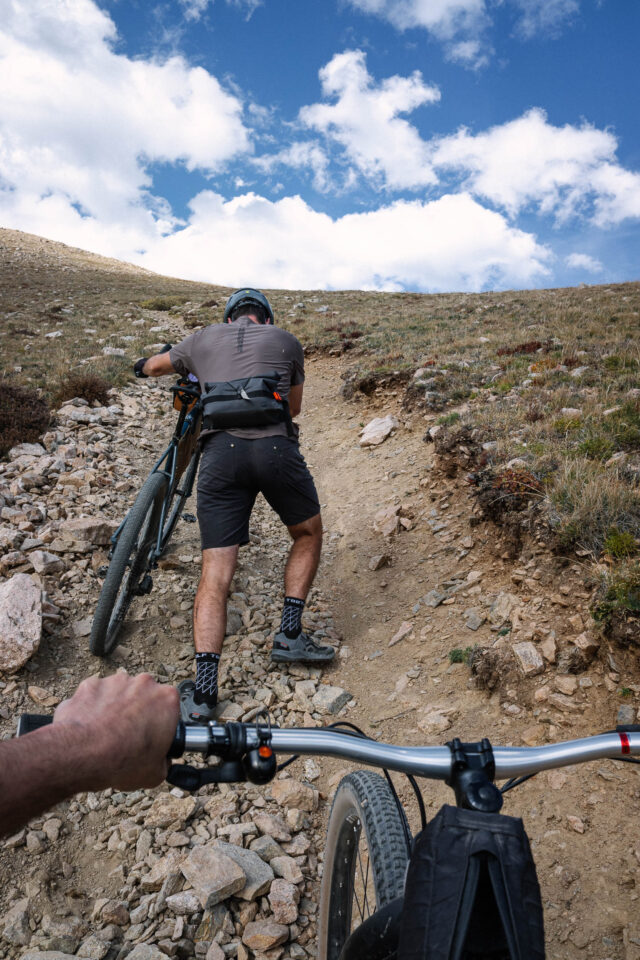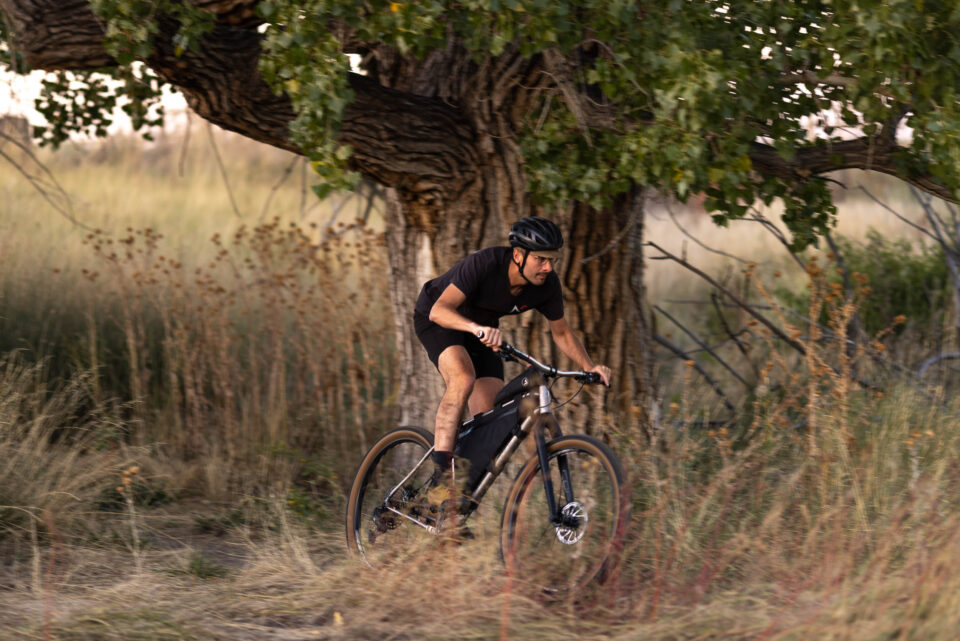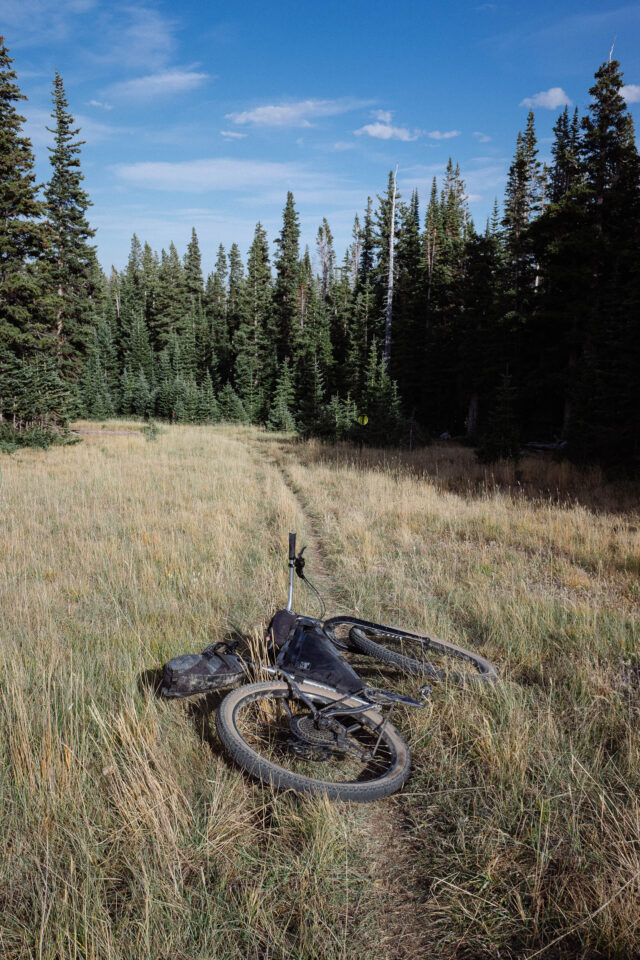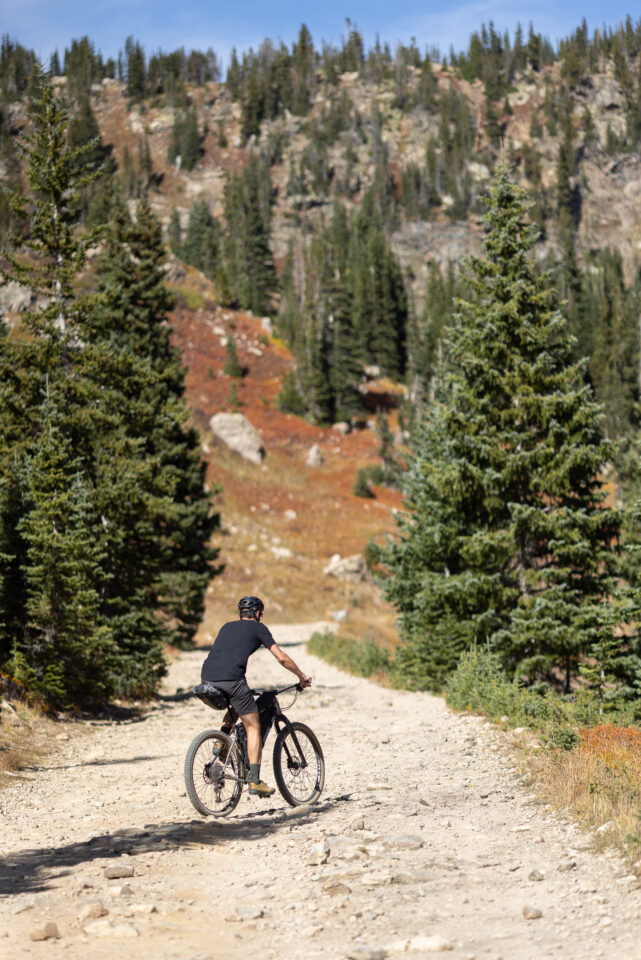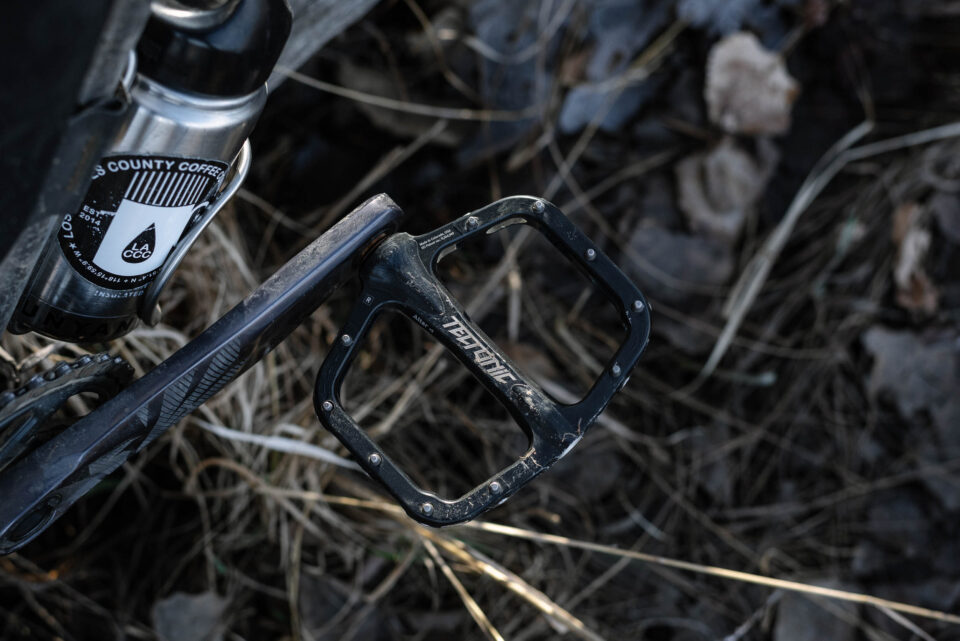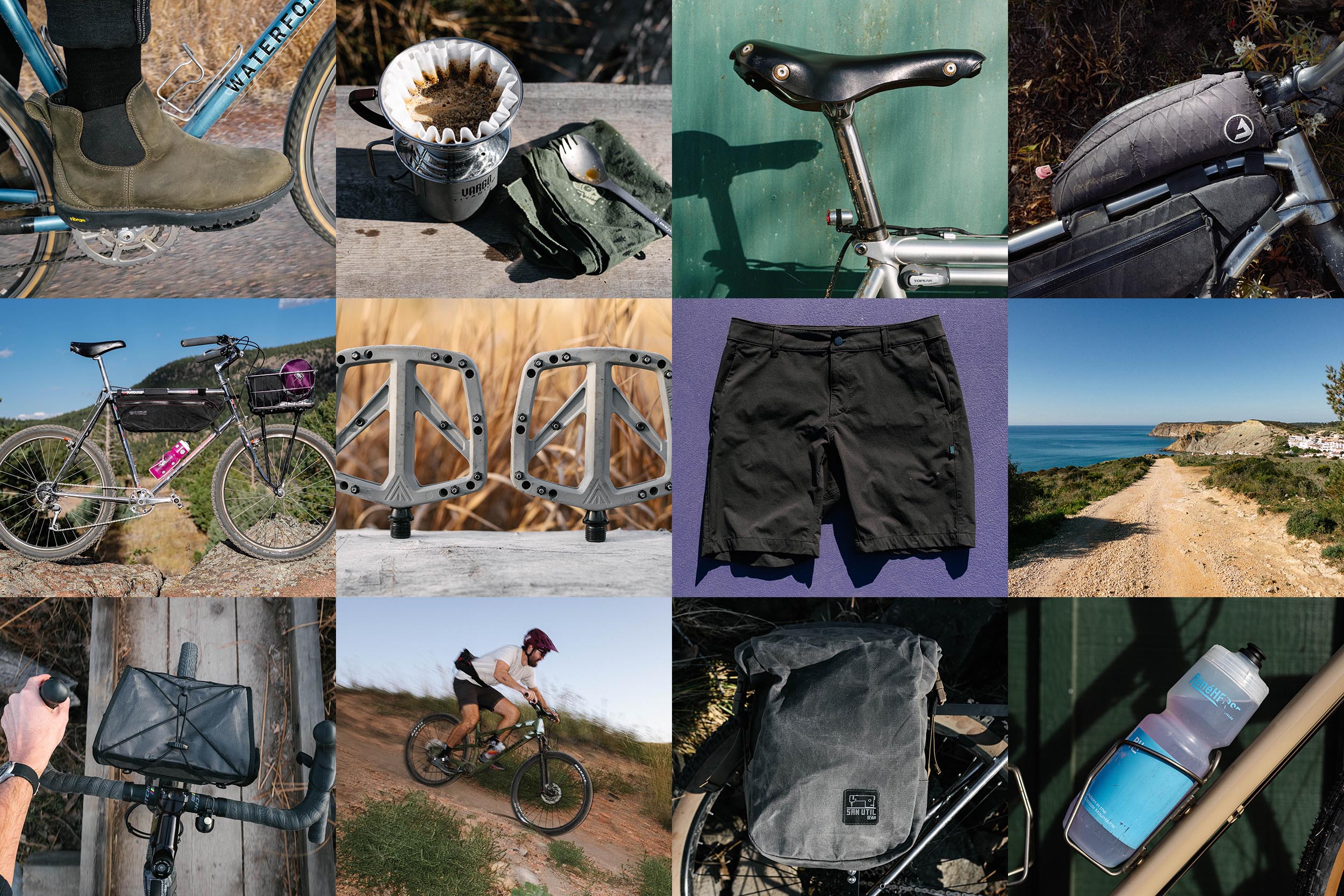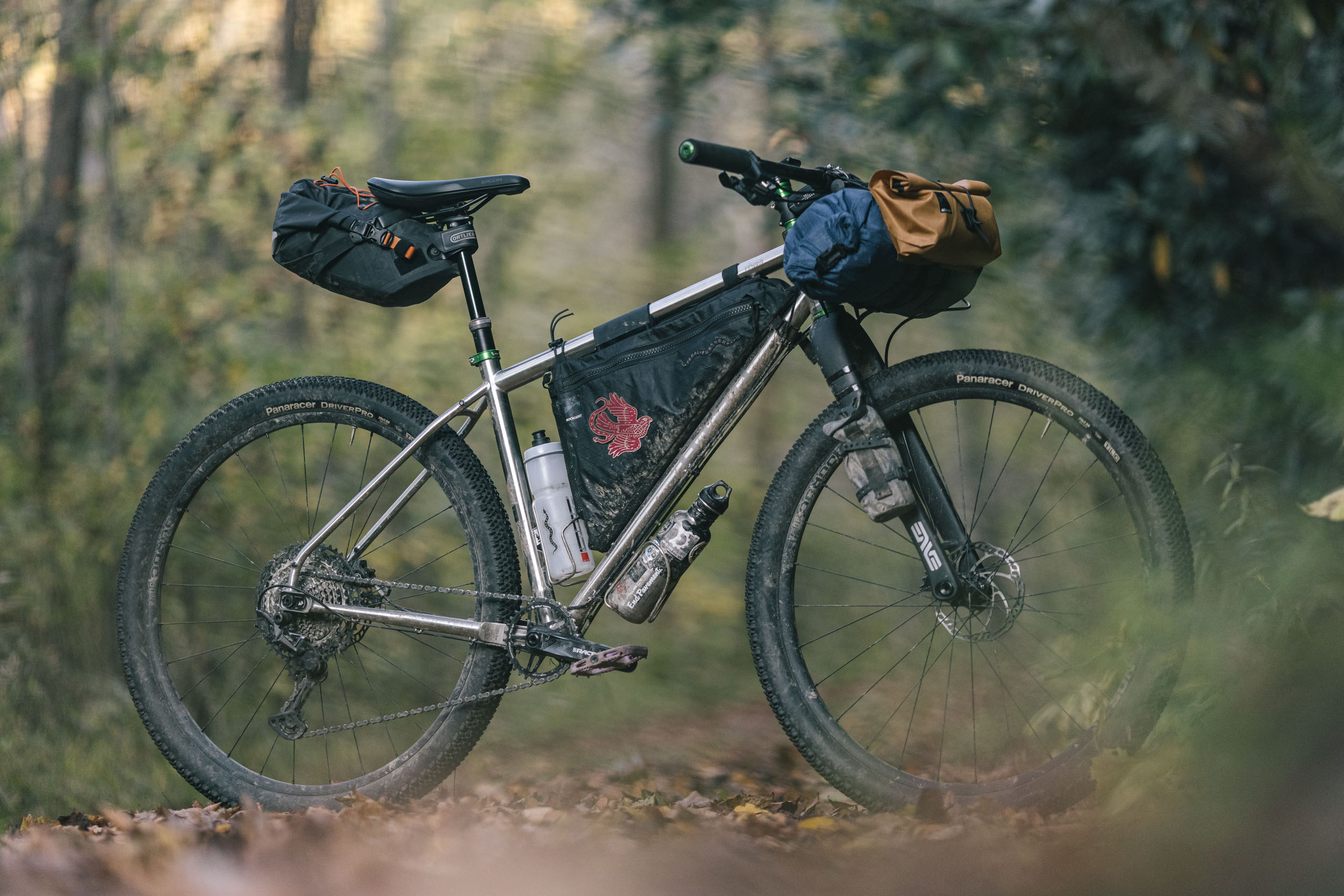Titus Silk Road Review: Adventure Titanium on a Budget
Share This
Featuring an expedition-ready titanium frame and a carbon fork with cargo mounts, the relatively unknown Titus Silk Road is a peculiar go-anywhere machine that comes in at or under $2,000 complete. Intrigued by its value proposition, Lucas pedaled one around Colorado throughout several seasons. Find his detailed Titus Silk Road review here…
Additional photos by Miles Arbour
Back in 2016, a handful of us from the BIKEPACKING.com team traveled to Central Asia for a three-week scouting trip of the now-popular Tian Shan Traverse route across Kyrgyzstan, which would later become the basis for the Silk Road Mountain Race route. I rode a heavy steel fatbike that was horribly undergeared and rolled on beefy 26 x 4.6” tires. Adding to my questionable bike and gear choices, I also carried 40 rolls of black and white Ilford HP5 film in drybags haphazardly strapped to fork cages, but that’s another story.
We plodded along throughout those weeks in the mountains, taking many breaks for tea with locals, stopping early for perfect campsites, and encountering all manner of terrain. Conditions sometimes matched the pixelated satellite images and crumpled Soviet maps we used to build the route. Other times, the route completely surprised us. From boggy two-track to bouldery chunk and forgotten gravel to short segments of fresh tarmac, the only constant was change. All this to say: If I could go back and do that unforgettable trip again, the aptly named Titus Silk Road is precisely the kind of bike I would take.

So, what kind of bike is the Silk Road? I’m afraid I don’t have an easy answer or neat box to put it in, but read on, and we’ll hopefully figure it out. Titus describes the Silk Road as a “true all-mountain expedition adventurer,” a mouthful that gets us partway there. With its somewhat unusual blend of geometry and rigid carbon fork, it’s not exactly a mountain bike if your version of mountain biking means ripping twisty singletrack and drops at speed. I think of it more as a bike built for marking two points on a map and then pedaling out to connect them, come what will. It’s not quite an ATB in my mind, either, nebulous as the term may be. Conceivably, it’s a not-so-distant cousin of a bike like the Otso Fenrir, whatever you’d call that.
The complete builds currently available from Titus come specced with flat bars, but if you judged the Silk Road based on only its geometry—especially the short reach—you’d likely expect to see it built with drop bars. It’s suspension-corrected, too, and many riders who build theirs from the frame up opt for a 100mm fork. In all, it’s a bit of an odd duck. As I discovered during my time with it, though, its hard-to-pinpoint nature is also one of its strengths. But before I get too far into the weeds, let’s step back and look at how we got here.
ORIGIN STORIES
Browse various bike media sites—including this one, occasionally—and you’ll find countless reviews that make it seem as if dropping $10,000 or more on a bike, plastic ones included, is a totally normal and expected thing to do. Even as someone who’s car-free, I’m not willing to part with $10,000 for a single bike. Titanium, in particular, has been elevated to an almost mythical status in the eyes of many bikepackers envisioning their dream build, but the costs associated with getting into space metal put it out of reach for many buyers.
So as not to bury the lead, Titus’ offerings caught my eye amid the sea of capable, versatile bikes on today’s market because of their nearly unmatched value. At full retail, the complete Titus Silk Road SRAM GX build reviewed here is priced at $2,030, though it’s regularly on sale or available for much less with a coupon; I’ve seen it as low as around $1,600 complete in the time I’ve been following it. If titanium is on your must-have list, the price is hard to beat. Framesets sell for $1,175, but I’ve spotted them listed for around half that price too.

Titus might seem like a fairly obscure brand unless you’ve been around the bike world for two or three decades. And even then, these days, it is. Once upon a time, when 26ers dominated the trails, Titus was a celebrated Arizona-based mountain bike brand, but it’s changed hands several times in the decades since and was eventually bought at auction by Planet X, the parent company of Titus, back in 2010. Rather than getting into any dubious claims of heritage, I think it’s best to view Titus at face value for what it is: a relatively nameless, direct-to-consumer sub-brand of UK-based Planet X that sells affordable, overseas-made Ti bikes. Whew. I’ve yet to confirm this with Titus directly, but I’ve read in a couple of places that frames are manufactured in China by Waltly Titanium, a generally well-regarded OEM and custom made-to-order company (as seen in many race rig roundups and a couple of Reader’s Rig posts on the site).
ORDERING A SILK ROAD
I ordered my loaner review bike through the Planet X website just as any customer would, and doing so through their online configurator was incredibly straightforward. Starting with the base SRAM GX model, I made a few quick modifications (such as speccing rear right/front left brake levers) and swapped out a few parts, including a dropper post.
I’ve purchased various components and accessories from Planet X over the years while living in Europe and the US, and the shipping has always been fast and fairly priced. This was my first time buying a complete bike from them, but the process was no less smooth. They even sent me a photo of the bike when the build was finished, and it was exceptionally well-packed—probably the best I’ve ever seen. It came with clear assembly instructions and a folder full of essential information, too. As much as ordering a bike online from another continent gives me pause, Planet X’s process eliminated all the hurdles and made it as seamless as possible. It landed safely here in Colorado not long after ordering.
FRAME AND FORK IN FOCUS
Getting down to the nitty-gritty, let’s start with the Silk Road’s frame design, which you’ve probably already formed an opinion on based on first impressions. It has a polarizing look, to be sure. The frame is constructed from custom-shaped 3AL-2.5V titanium tubing with a custom yoke on the 73mm BSA bottom bracket that allows a 29 x 2.6” tire to fit. There are three pairs of bottle cage bosses on the main triangle, plus a set of top tube bosses, rear rack mounts, and three-pack mounts on the seatstays. I couldn’t actually attach anything to the seatstay mounts without tire interference using the cages I had on hand, but I could see mounting a small frame pump or a micro cage there, maybe. For most practical purposes, their placement is a miss.
The Silk Road has fairly subtle Titus branding and a not-at-all subtle arced top tube/headtube junction. Titus claims this shape reduces road buzz, and while I can’t validate that claim or speak to its effectiveness—especially with burly tires soaking up most of the trail chatter—I can confirm that this design decision greatly increases the frame’s eyesore factor. Titus also says the arc shape boosts the potential frame bag volume, which is welcome and true, though it might make off-the-shelf bags look a little wonky near that junction. The cable routing is a funky mix of partially internal (rear brake and dropper) and external (front brake and rear derailleur) and is slightly hectic-looking on the main triangle.
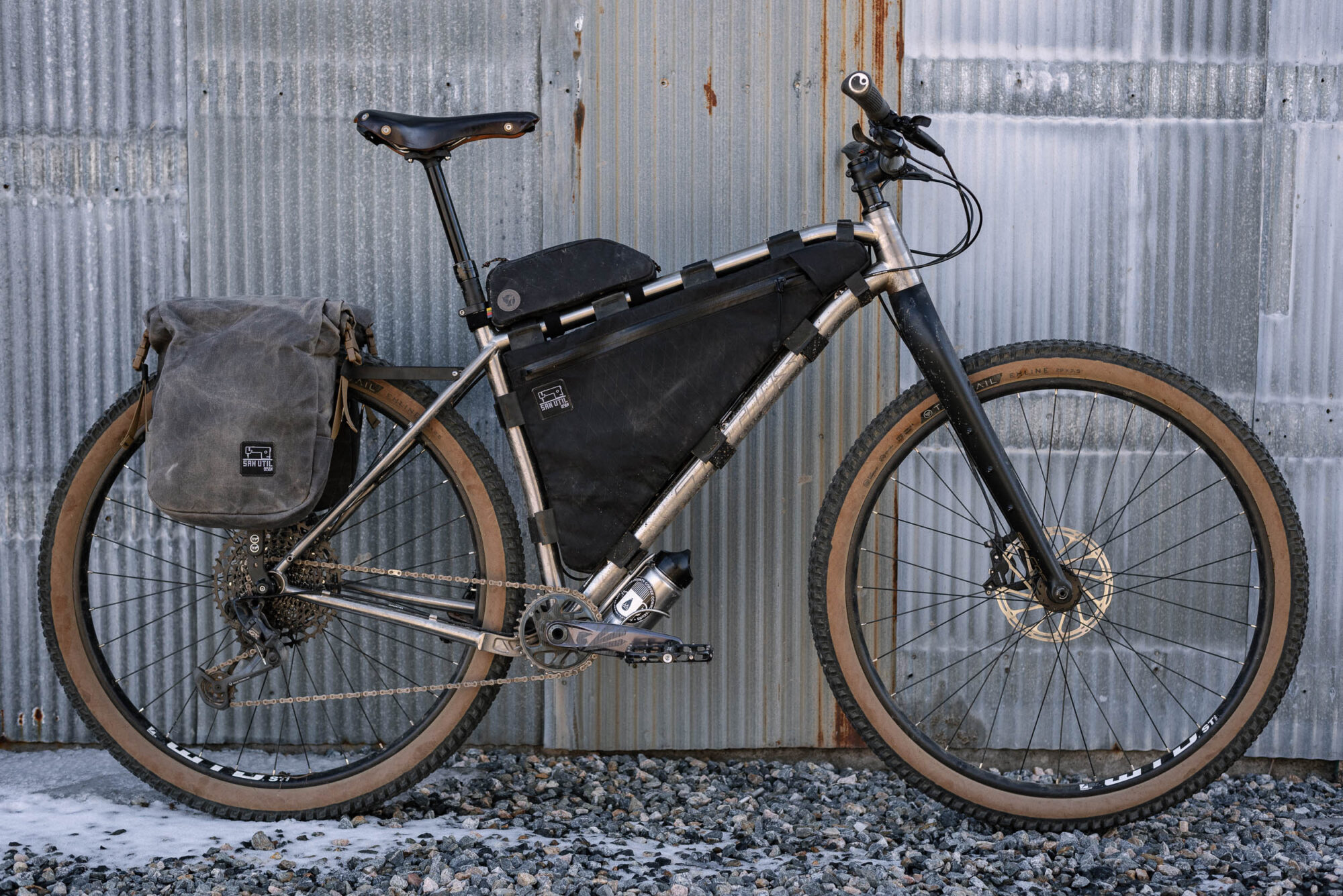
Frankly, from my entirely subjective perspective, I find the Silk Road to be an… aesthetically challenged frame, but my tastes are rather traditional. Installing a made-to-measure frame bag and covering it in some Rocky Mountain dirt helped soften my initial impressions. The Silk Road has a utilitarian feel and purpose, so perhaps its unhandsome look is fitting. Big-picture form aside, although I’m by no means an expert in frame construction, I’ve ridden and owned many Ti bikes, and nothing about this one’s construction offers any immediate cause for concern. It passes my inspection (and, more meaningfully, is backed by Titus’ lifetime warranty).
Geometry
| S | M | L | XL | |
|---|---|---|---|---|
| RIDER HEIGHT (In) | 5’3″-5’7″ | 5’6″-5’10” | 5’9″-6’2″ | 6’1″-6’4″ |
| RIDER HEIGHT (cm) | 160cm-170cm | 168cm-178cm | 175cm-188cm | 185cm-193cm |
| EFFECTIVE TOP TUBE LENGTH | 580mm | 605mm | 630mm | 655mm |
| SEAT TUBE LENGTH (C-T) | 394mm | 432mm | 470mm | 508mm |
| SEAT TUBE ANGLE (Actual) | 74° | 74° | 74° | 74° |
| CHAINSTAY LENGTH | 435mm | 435mm | 435mm | 435mm |
| BOTTOM BRACKET DROP | 70mm | 70mm | 70mm | 70mm |
| HEAD TUBE ANGLE | 70° | 70° | 70° | 70° |
| WHEEL BASE | 1072mm | 1098mm | 1124mm | 1149mm |
| FRONT CENTER | 647mm | 672mm | 698mm | 723mm |
| HEAD TUBE LENGTH | 95mm | 105mm | 115mm | 125mm |
| STACK | 607mm | 617mm | 626mm | 635mm |
| REACH | 406mm | 428mm | 450mm | 472mm |
Titus says the Silk Road has “expedition geometry,” which feels appropriate to portray its demeanor. In more concrete terms, that means a steeper 70-degree headtube angle that provides quick and easy handling, a longish wheelbase and notably low 70mm bottom bracket drop that offer a planted feel, and a shorter reach and moderately high stack that put the rider in a more relaxed position on the bike. These are all good things from a bikepacking point of view, though you wouldn’t necessarily expect to find all of them on the same bike.
The suspension-corrected monocoque fork has rear-angled three-pack mounts on both legs that are rated to carry up to five kilograms (11 pounds) of cargo per side. The crown isn’t drilled, the brake cable runs along the outside, there’s no dynamo wire mounting, and it sports a 15mm thru-axle. Titus says it’ll fit a monster 3.5” tire, which sounds about right to me. It’s matte black with minimal Selcof (in-house) branding. Like the frame, it’s either ghastly or badass, depending on who you ask. I have no qualms about it beyond my usual wariness of carbon forks, and if I had more time with the Silk Road, I’d love to swap it out for something with suspension.
BUILD KIT
Especially at its price, the Silk Road’s SRAM GX build kit is competent, though long-term owners will likely want to upgrade and swap out bits as they go, as there are no stand-out parts. For the riding I did, I was pleased with the 12-speed GX Eagle drivetrain with 32 x 11-50T gearing, which shifted smoothly via the GX Eagle trigger shifter. The hydraulic SRAM Guide G2 R brakes were quiet and powerful enough, though not impressively so, and I know Logan has had some issues with these brakes in the past. The value-packed WTB i30 wheels could also use an eventual upgrade but withstood drops and rolled amiably. I opted for 29 x 2.3” WTB Rangers initially but changed them for a pair of 29 x 2.5” Teravail Ehlines, which were quite an improvement, even before I had a chance to set them up tubeless.
The only hugely disappointing part of the kit was the Selcof dropper lever and post, which actuated half of the time at best. If I could do it again, I’d stick with the included rigid post and splurge on something from Wolf Tooth Components or another more established brand. The included touchpoints (grips, handlebars, and saddle) were all fine, but I quickly switched them for Ergon GA3 grips that help with my numbness-prone hands, wider and more confidence-inspiring aluminum Hunter Smooth Move bars, and my trusty Brooks C17 Carved that’s moved between untold bikes. Find the full build kit below.
Titus Silk Road SRAM GX (Stock) Parts List
- FRAME: Titus Silk Road, XL
- FORK: Selcof Carbon 27.5+/29er 3 Bolt
- HEADSET: Selcof Sport Integrated Cup V2
- STEM: Selcof Hot Box, 50mm
- HANDLEBAR: Selcof Carbon Riser, 740mm
- GRIPS: On-One Knurl
- SADDLE: San Marco Monza Start
- SEATPOST: Selcof Watchtower Dropper, 30.9mm
- BRAKES: SRAM Guide G2 R
- ROTORS: SRAM Avid Centerline 160/180mm
- SHIFTER: SRAM GX Eagle Trigger, 12-speed
- DERAILLEUR: SRAM GX Eagle
- CASSETTE: SRAM PG-1210 Eagle, 12-speed (11-50)
- CHAIN: SRAM PC NX Eagle, 12-speed
- CRANK: SRAM GX Eagle DUB, 170mm, 32T
- RIMS: WTB i30
- HUBS: Formula
- TIRE/FRONT: WTB Ranger 29 x 2.3″
- TIRE/REAR: WTB Ranger 29 x 2.3″
As for bags, I had San Util Design down the road in Winter Park build me an ultra-practical custom full-frame bag that steals the show, and I also ran a Denver-made JPaks top tube bag and seat pack when I wasn’t running an Old Man Mountain rear rack paired with the San Util Design Light Weight Panniers from the Kona Sutra I reviewed last fall. The sleeper Specialized x Fjällräven Exchange top tube bag made the occasional appearance as well.
WHILE OUT RIDING
This review is quite a long time coming, which means I had the opportunity to pedal the Silk Road all over the place here throughout several seasons. From lush midsummer to blustery winter, my trips aboard it included big days out in the mountains, low-key trail rides, mixed-terrain bikepacking, quick gravel loops, gnarly singletrack jaunts, casual errands around town with the rear panniers packed full of groceries, and more.
I was pleasantly surprised by the Silk Road from my very first ride as long as I never expected it to everything well. Riding it felt natural in all the scenarios mentioned above, and I found that it has an overall neutral feel that’s more lively than sluggish but not remarkably so. I’ve never been much of a shredder, and it never tried to talk me into becoming one. Instead, the Silk Road is comfortable and capable but with just enough spark to keep you engaged.

Totally unloaded, I felt a little unsure about what to do on it or how to ride it, but loaded up with even minimal bags and gear, it quickly developed a much clearer sense of purpose. Attach a rack or bags, take it slow and steady, go anywhere. If it’s not a typical mountain bike or an ATB, perhaps it’s best described as a mixed-terrain tourer? Now we’re getting somewhere. Note that I have no interest in trying to introduce some dogmatic new category of bike; I’m merely trying to make sense of this particular one in flat-bar mode.
My experience with the Silk Road and understanding of its strengths and weakness is nicely encapsulated by a fall trip on a classic loop from the town of Nederland and over Rollins Pass with its picture-perfect Devil’s Slide Trestles (ironically not pictured). Our variation on the route that time included some mellow gravel, rugged mountain roads, steady climbs, steep hike-a-bike, grassy doubletrack, chunky black-diamond descent, a little bit of fast pavement, and, of course, spectacular views that made all the effort worthwhile.
I was sold on the Silk Road as a rough-stuff rambler after that trip. It handled everything but the chunkiest downhill sections with aplomb. A better rider could have easily navigated those sections with less bike, but it never gave me any reason to question its all-around prowess. Still, a slightly slacker headtube angle would be a sensible update to give it a little more downhill gusto with less input. It’s not the best tool for any particular job, but time and again, the humble Silk Road proved that it’s a kind of skeleton key that unlocks all kinds of potential rides and routes. I could see mounting wide, swept-back bars—something like Jones H-Bars—and riding it wherever your whims take you, as you might a Surly Ogre or Bridge Club.
Of course, there’s nothing to stop you from building and riding a Silk Road that suits your unique vision, whether that’s a fast and nimble drop-bar MTB with a suspension fork for racing or a fully laden expedition rig with all the requisite bags. I’ve seen happy owners having a blast on both interpretations and many others in between.
PRICE AND AVAILABILITY
I’m not sure if they’re temporarily low on inventory or if Titus is slowly phasing out the Silk Road, but it’s currently only stocked in sizes small and extra large. There used to be more build variations, but there are just two complete builds at present: the $2,030 SRAM GX presented here and the higher-end SRAM AXS, which comes in at $2,887. Framesets are also only available in small and extra large for the time being and are priced at $1,175. As mentioned, there’s always another sale around the corner with Titus/Planet X, and I imagine patient buyers will be able to score a deal with a little waiting. Delivery rates vary by region and can be calculated in the cart.
- Model/Size Tested: Titus Silk Road SRAM GX (XL)
- Weight: ~25 pounds (11.3 kilograms)
- Place of Manufacture: China
- Price: $2,030
- Manufacturer’s Details: Titus Bikes
Pros
- Affordably priced well below most competitors
- Has ample mounts, good tire clearance, and generous frame bag space
- Lifetime warranty helps with peace of mind
- Versatile design and frameset-only option open up many possibilities
Cons
- House-brand components are hit or miss
- Short reach won’t work for everyone
- Polarizing looks won’t either
- Limited size and build availability
Wrap Up
To help answer the question of what kind of bike the Titus Silk Road is once and for all, I’d imagined a closing passage likening it to an All Terrain Armored Transport (AT-AT Walker) out of Star Wars, minus all the death and destruction, but reason prevailed, and I’ll spare you from that. However, that arced top tube does make it look a little like one, and it probably could adeptly transport you and your stuff on a journey across Hoth with the proper cold-weather gear.
Based on my experiences back here on Earth, I think the Silk Road is ultimately best summed as an ATT—an all-terrain tourer. It may not be especially elegant or innovative, but load it up and point it where you want to go, and it can probably take you there with a smile. It has a generalist geometry that makes some compromises to enable it to do most things pretty well—something folks who don’t have the room or resources for a stable of specialist bikes might appreciate.
At $2,000 complete, often far less, it’s an affordable way to scratch the titanium itch, assuming the fairly modest SRAM GX build kit works for you. Truth be told, Ti has long since lost some of the appeal it once had for me, and I generally have a hard time justifying the extra cost over quality steel, but the Silk Road helps solve the cost-benefit equation. It’s not a bike I find myself raving about, but for the money, I think it’s well worth a look for the right rider. It certainly surprised me during my time with it, sparking my curiosity and interest in connecting dots and planning trips further afield, which is more than I can say for many more expensive bikes I’ve thrown a leg over.
Further Reading
Make sure to dig into these related articles for more info...
Please keep the conversation civil, constructive, and inclusive, or your comment will be removed.








